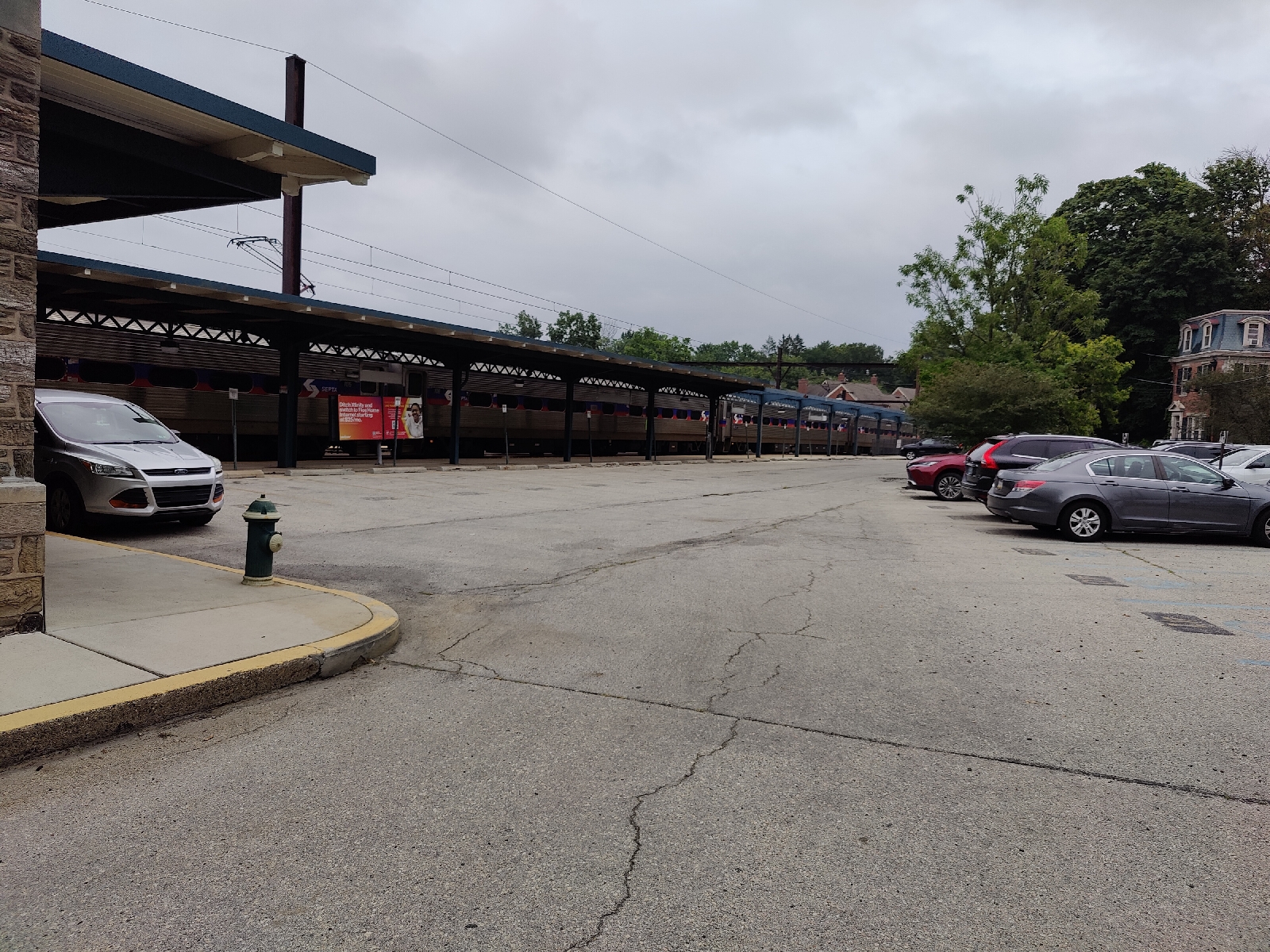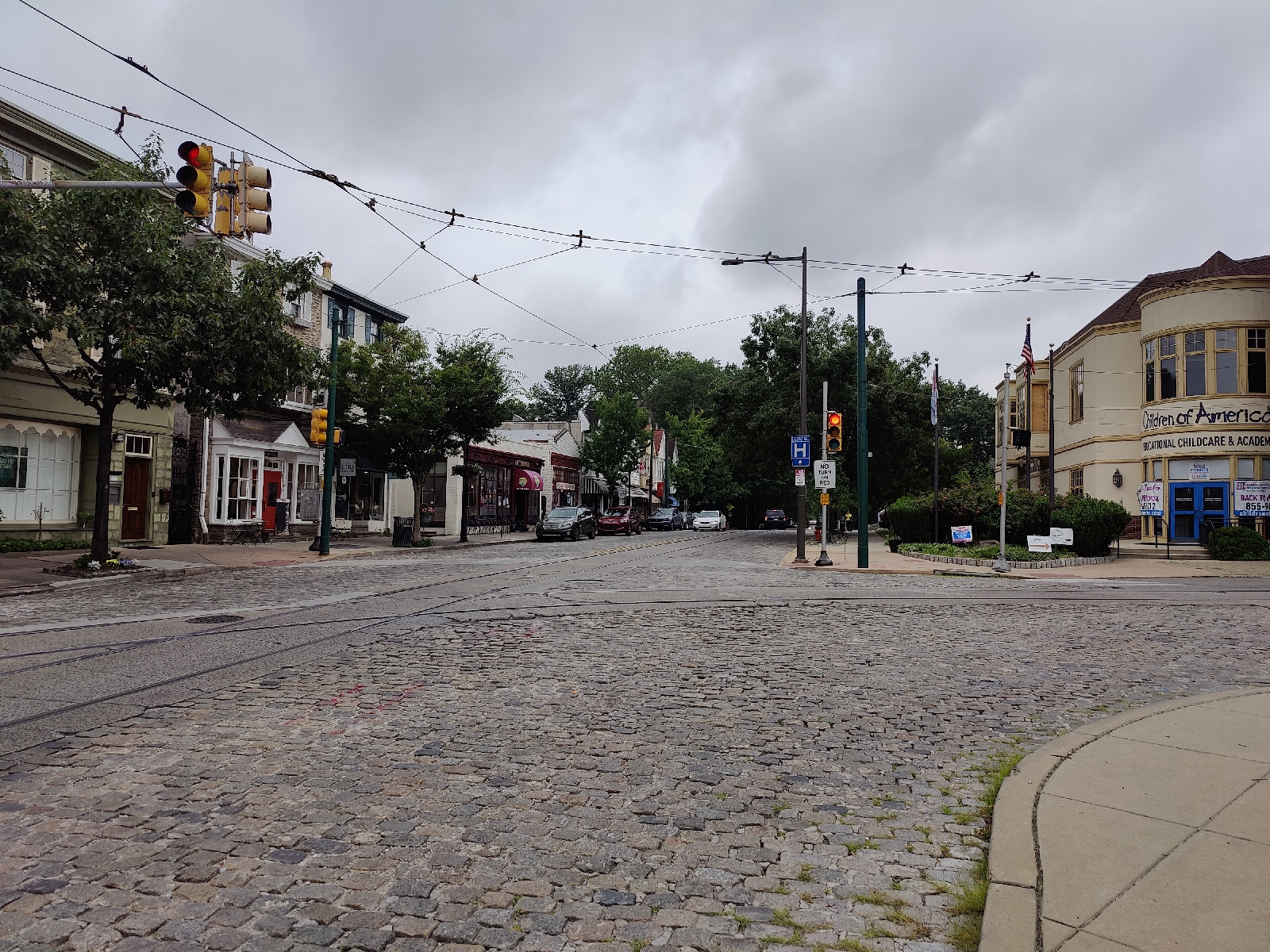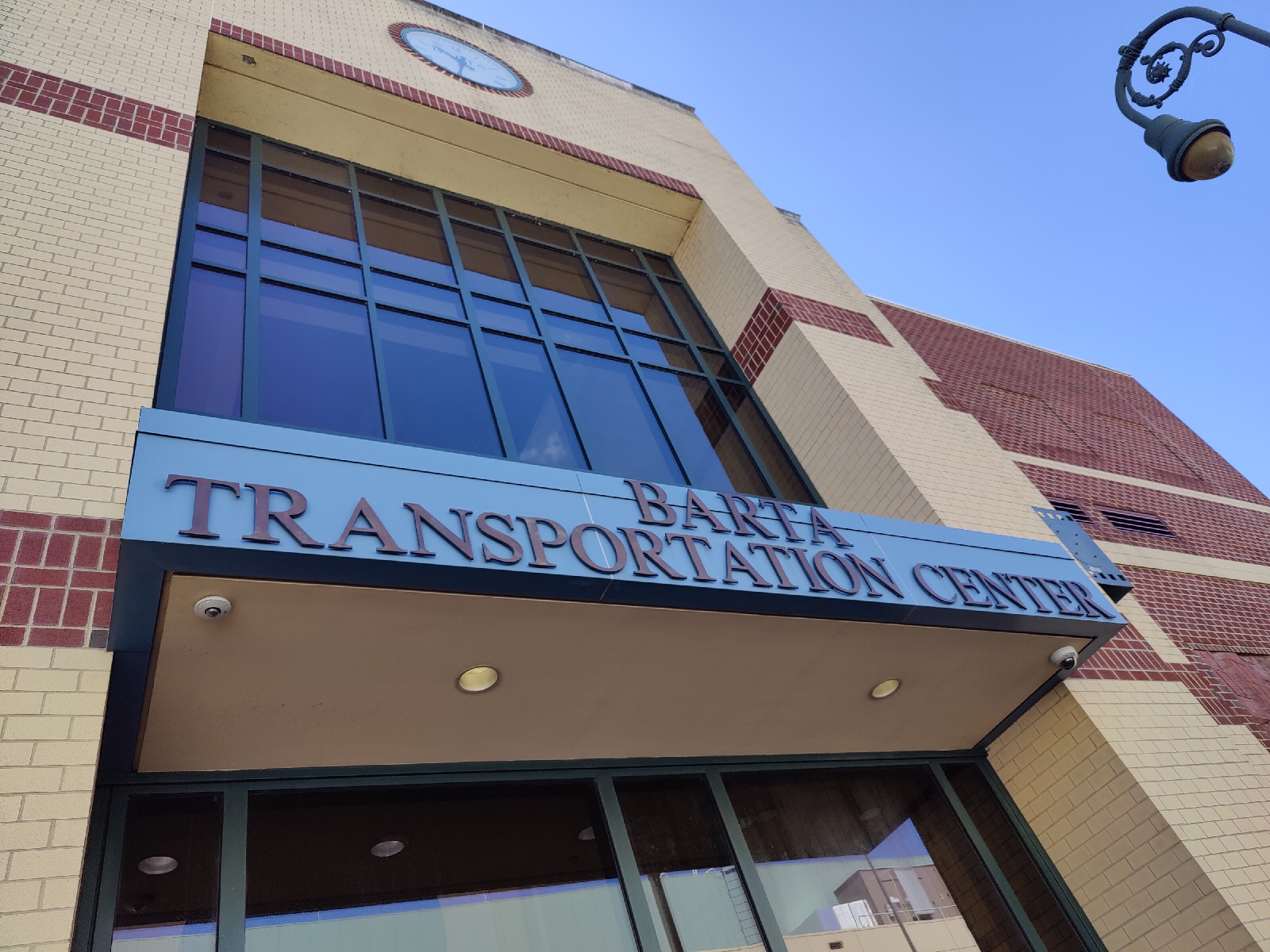Station Review #57: Chestnut Hill East (SEPTA)
Chestnut Hill East is the terminus station on SEPTA's Chestnut Hill East line, located along Bethlehem Pike in Philadelphia's Chestnut Hill neighborhood.
History
Chestnut Hill East was built as the terminus for the Chestnut Hill Railroad, which itself was leased by the Philadelphia, Germantown, and Norristown railroad in 1854. The Chestnut Hill branch was extended 4 miles (6.4 km) from the Germantown Branch (which ironically enough later on was demolished). Chestnut Hill was the terminus station for this branch.
The Philadelphia, Germantown and Norristown became the Reading Company in 1870 and thus so did the line. Not long afterwards, the original building shown above was demolished and another building, this one made of stone instead of brick, was built in its place. This arrangement lasted six decades. In 1932, the Reading Railroad decided to finally electrify and grade-separate all of the Chestnut Hill East branch. Doing so required all of the stations to be rebuilt, and Chestnut Hill East was no exception.
Sometime in the 1970s, between the Reading Railroad's trackage being transferred to Conrail and then SEPTA, Chestnut Hill was renamed to Chestnut Hill East.
As of February 5th, 2024, the ticket office at Chestnut Hill East station has been permanently closed. The waiting room is still accessible by Key Card, but there will be no attendant.
Tour
The station building is almost entirely made of stone, made similarly to the building it replaced. Much unlike many other stations, this station is incredibly ornate, having beauty that other stations in this system do not. This is not surprising considering that this station is in Chestnut Hill.
This station does not have a huge amount of parking. There are two parking lots on either side, both not very large on their own, but certainly enough space to park 127 cars according to SEPTA, though I think this is probably a slight overestimate, and the number is probably more like 123. The parking lot is also a good place to see just how long the platforms are.
There are two terminal platforms that trains going in either direction (inbound or outbound) can use. Note that these platforms are not accessible.
This helpful sign should be able to tell you what track the next train will depart from. If only it actually worked at all whatsoever.
I think this was supposed to be an old schedule board or something like that. Whatever it was, this empty board certainly is not that anymore!
Inside the waiting room, there are a lot of things, an uncommon sight for the average SEPTA regional rail station with a waiting room. The main thing here is a bench that's actually in the middle of the room for once. I'm no design expert, but I still would say this room is designed in such a way that it seems welcoming to an untrained eye like my own.
Some of the leaflets provided by this station are from as early as 2007. This just kind of adds to the charm of this station.
Bus Connections
There are not many connections at Chestnut Hill East station, but there are more than zero of them. The connections here include:
• L - Olney Transportation Center to Erdenheim (this is a specific variation of the L bus that terminates in Erdenheim)
• 94 - Chestnut Hill Loop to Montgomeryville Mall
Both of these are buses that serve Bethlehem Pike, and unsurprisingly both are fairly infrequent
You can also go to the Chestnut Hill Loop and get even more connections through there, but it's on the other side of a very large hill that is annoying to walk up, and I won't count it for the purposes of this blog post.
About Chestnut Hill
Chestnut Hill is a neighborhood where the affluent make up the majority of residents. There are stores, a college, and mansions here. Most of these things are on the other side of the hill the station is on top of, and are not easily accessible.
There are a few stores and a café near the station itself, but not much else. More importantly, there is tree cover here!
Statistics
Name: Chestnut Hill East
Agency: SEPTA
Line(s): Chestnut Hill East
Locality: Chestnut Hill
City/Township: Philadelphia
County: Philadelphia
State: PA
Ridership: 432 riders per average weekday (2017)
Amenities
Accessible: ×
Bathrooms: ✓
Bicycle parking: ✓
Clean Station: ✓
Connections to other transit routes: ✓
Easy passage for each side: ✓
Fare Payment Kiosks (if applicable): ✓
Good Wayfinding: ✓
Indoor Shelters: ✓
Maps: ×
Multiple entrances/exits: ✓
Adequate Parking: ✓
Seating: ✓
Shelters: ✓
Station In Good Condition: ✓
Ticket Kiosks (if applicable): ×
Ticket Offices: ×
TOD: ✓
Train Departure/Arrival Info (signs that update/screens): ✓
Updated/Useful Signage: ✓
Final Verdict: 4.5/10. A 5/10 is about the highest I can give a station that's inaccessible. This got pretty close.
Station Directory
--------Philadelphia County--------
''''''''CC Zone''''''''
30th Street (Backlog)
Suburban
Jefferson (Market East)
''''''''Zone 1''''''''
Wayne Junction
Wister
''''''''Zone 2''''''''
Washington Lane
Stenton
Mt. Airy
Wyndmoor
Gravers
Chestnut Hill East
















Comments
Post a Comment